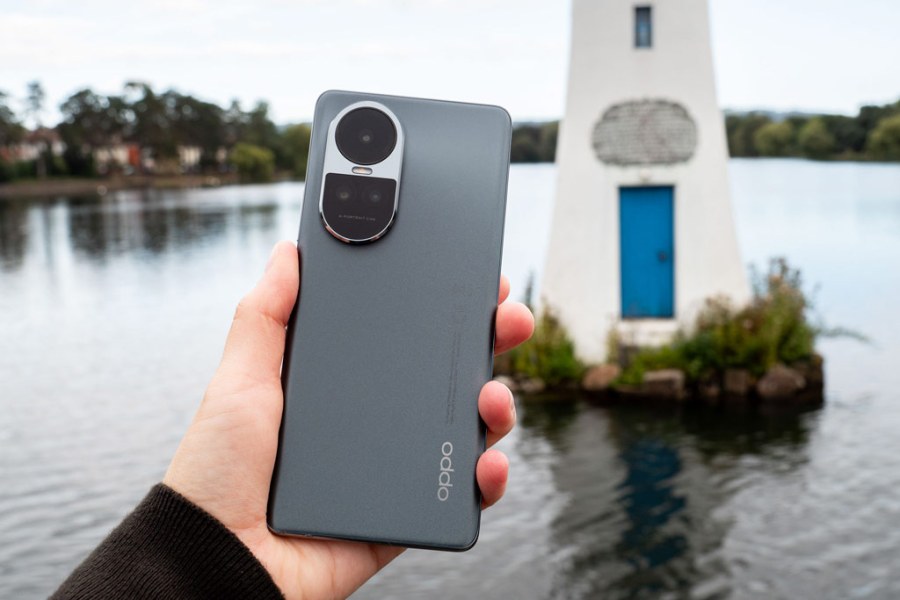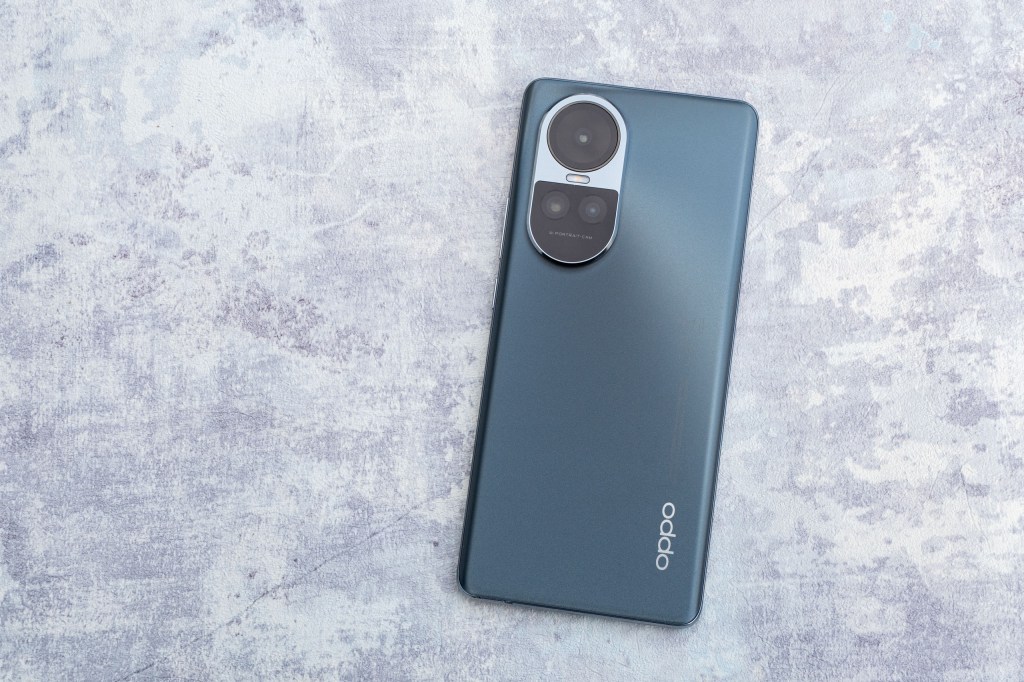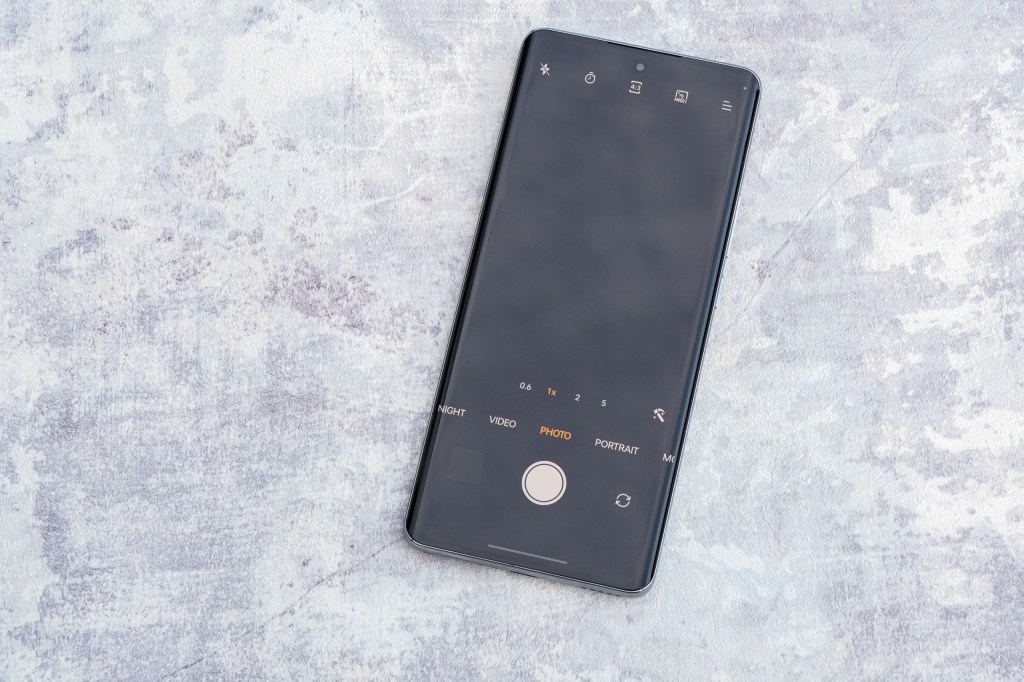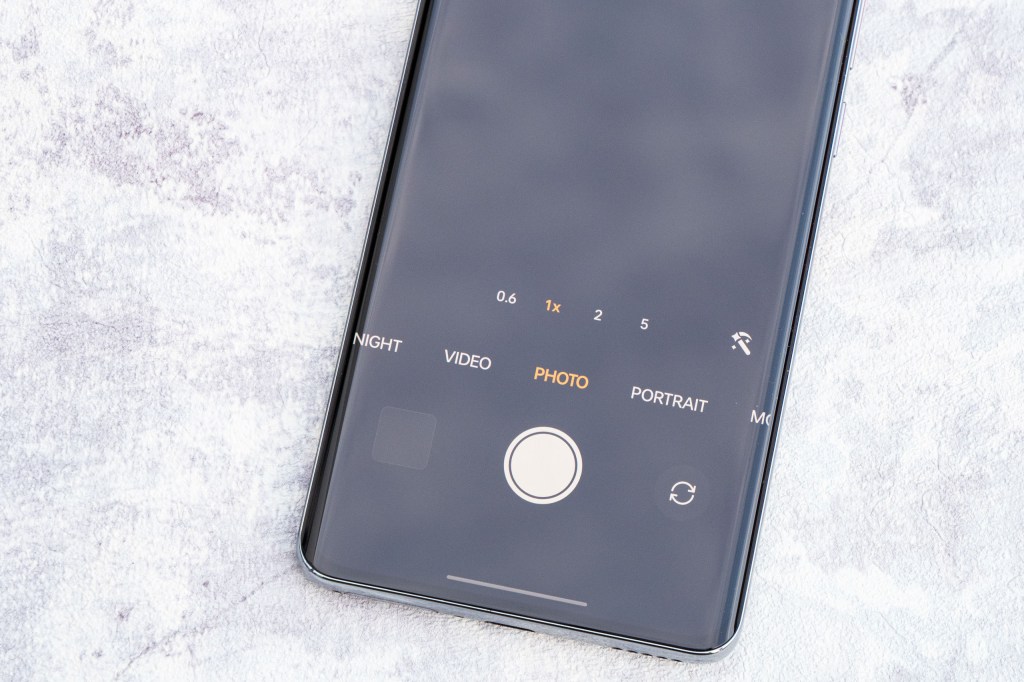Amateur Photographer verdict
What it lacks it makes up for and is great value. Triple lens setup gives good picture quality; both 1x lens and the 2x “telephoto” option produce fine results. The ultrawide is decent too.- Good quality images
- Decent x2 telephoto
- Good value for phone camera quality
- Lacks macro focusing
- Video quality is only tolerable
- No raw format shooting
- Screen is fairly low resolution
If you’re in the market for one of the best budget camera phones for photography, good mid-range options do exist. OPPO has been making well-performing camera phones for some time now, and with the OPPO Reno 10 coming in at £399, it’s quite a bargain for what you get – on paper at least.
At a glance:
- 64MP wide camera, f/1.7 aperture, 25mm equivalent
- 32MP telephoto camera, f/2.0 aperture, 47mm equivalent
- 8MP ultra-wide camera, f/2.2 aperture, 112°
- 32MP, f/2.4 aperture, 89° selfie camera
- 6.7-inch AMOLED screen
- 4K video at 30fps, 1080p video at 30/60fps
- Android 13
- Oppostore.co.uk
There’s a triple-lens setup, with a 64MP main sensor, and a 32MP telephoto sensor – a pretty rare combination among the best budget camera phones. There appears to be a trade off with the ultrawide, as that only has 8MP, but we’ll see how well (or otherwise) all these sensors perform during this review. There’s 4K video recording, but it maxes out at 30fps – another trade off for the cheaper price, but something that should be fine for most users.
Other features of note include a 6.7-inch AMOLED screen, with 2412 x 1080 pixels, a large 5000mAh battery, super-fast charging (67W), 256GB of memory and ColorOS 13.1 (based on Android 13).
OPPO Reno 10 – Handling and Design
Despite being one of the cheaper phones on the market, the Oppo Reno 10 has an attractive look about it. It’s available in a “silvery grey” colour, which has a nice sheen to it. The edges of the phone are also nicely curved.
The screen is 6.7” and has a 93% screen to body ratio, meaning a large amount of the surface area is indeed covered by the screen – the selfie camera only takes out a “hole punch” gap at the top of the screen.
On the downside, the resolution isn’t particularly high, given the size of the screen, and peaks at 900 nits for brightness. While this puts it some way below many of the flagship models out there, it’s to be expected for the price and still looks pretty good, all things considered.
It is not especially tough; no Gorilla Glass or other reinforcement – so may be more susceptible to scratches than more expensive models. I didn’t have a problem with this during my time with it for the review, but I’d recommend a case to those who buy this phone. It also doesn’t have any rating for water resistance – again, to be expected at the price.
The cameras are housed in a fairly strange looking unit on the back of the phone: the main (64MP) sensor sits in a large circle, with the two additional lenses much smaller underneath it.
OPPO Reno 10 – Native camera app
Like many other Android phones, the Reno 10 offers quite a comprehensive native shooting app – providing lots of choice for shooting in different ways.
The default mode gives access to the three camera units on the back, as well as the option to quickly access a 5x digital zoom option. You can also pinch to zoom to get up to 30x zoom, too. There are a couple of extra features to choose from here: switching on Auto HDR, or selecting a high-res mode to record at the full 64MP when using the main lens. By default, images are output at 16MP from the main lens. You can also change aspect ratio, switch a timer on/off and add a flash.
There are some other shooting modes found along the bottom of the screen, including Night, Portrait and Video. One thing missing is any kind of macro option – previous Reno phones had a 2MP macro camera, but none is to be found here. This is no great loss as these low-resolution macro cameras don’t tend to perform very well.
Interestingly, there is a Pro mode available, which allows you to change things like ISO, shutter speed, exposure compensation and so on. You don’t get the option to record in raw format though.
The Portrait mode gives you the opportunity to shoot at either 1x or 2x, depending on how much you want to include in your shot. The 2x is described as a “portrait” lens because of its 47mm equivalent focal length, so you might also find that you want to shoot portraits in the normal Photo mode too.
OPPO Reno 10 – Image quality and performance
This being a £400 phone, it wouldn’t be fair to expert superlative performance. That said, it does a pretty decent job – particularly when there is a good level of light.

Overall, images from the main sensor are the best – as we’d expect – with a good amount of detail and nicely saturated colours. Exposures are well-balanced too.

The 2x lens puts in a very good performance too – though we might have reasonably expected a 2x mode from the 64MP main sensor to be decent too; so a longer lens would perhaps have been even more welcomed in its place. If you want to get a little closer, the 5x “digital zoom” option is not too bad – if light is good. We’d avoid using the 20x digital zoom though.

The ultrawide angle lens is decent enough if you’re mainly viewing images on your phone screen, and don’t intend to scrutinise them too closely. I’d certainly rather have this than a 2MP macro lens. Further good news is that colours between all three of the lenses are pretty well matched.

For Portraits, OPPO makes some fairly bold claims about how “professional” the Reno 10 is. While they’re reasonably good, with plenty of detail – the fall off between subject and background is pretty stark and doesn’t stand up to close scrutiny. Still, again if you’re shooting mainly for social media and only ever look at pictures on your smartphone screen, they’re certainly good enough.

Shooting in low light sees a reasonably good performance if, again, you don’t intend to examine your images too closely. Even with the best performing 1x lens, you can see quite a bit of smoothing in certain areas.

The selfie camera creates nice enough images – they’re a bit smoothed out / lacking in detail, but arguably this is more flattering than something which produces “better” results.
Video results are OK if you’re just grabbing quick clips of say family and friends. This is never going to be first choice for any content creators and the like. At 4K, the results are quite shaky – you’ll need to shoot in Full HD if you want to turn on “Super Steady” stabilisation, which is what we’d recommend for most ordinary users.
OPPO Reno 10 – Value for Money
There’s no denying that if you want the best camera performance from a smartphone then you will generally need to spend high to get it.
However, if you’re happy to make a few sacrifices, and mainly want something which is capable enough in good light and where the photos never really leave your phone, then a cheaper model like this makes a lot of sense.
If you don’t want to spend a huge amount but still have nice photos – perhaps if you’re usually carrying your “usual” camera with you most of the time anyway – then it’s a decent enough backup.
That said, for the same kind of price, you could look at some older flagship models – such as a second-hand iPhone 12 Pro for example, or you might consider something like the Google Pixel 7A which puts in an impressive performance for its price.
Still, if you want something that’s brand new and does well as an all-rounder, there’s little to complain about with the Reno 10.
OPPO Reno 10 – Verdict

While this smartphone will not disrupt the big names on the market, it is a decent affordable option among its peers.
The triple lens setup offers good picture quality, with the 1x lens producing fine results, and the 2x “telephoto” option also doing very well. The ultrawide isn’t the best on the market, but it’s not bad. Video isn’t very impressive, but is likely to be good enough for grabbing occasional clips.
There are some things missing here – not a surprise considering the price – such as raw format shooting, macro focusing and a higher resolution screen – but it’s a good buy if you can live without those things.















